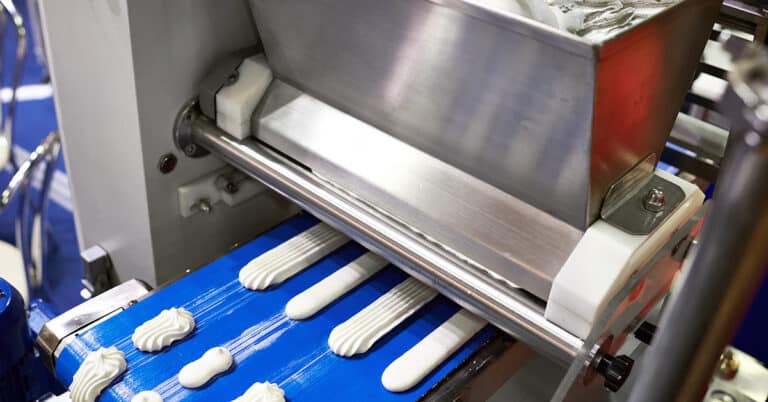In order to be truly effective, maintenance practices should go beyond replacing a worn-out part when needed or checking fluids at a scheduled interval. Even the most well-intentioned maintenance strategy can go awry without the proper underpinnings to define maintenance preparation, execution and evaluation. Work Execution Management fulfills these needs, acting as the foundation of all maintenance and reliability activities. Below, we’ll explore what Work Execution Management is and how it is responsible for maintenance success.
The foundation of all maintenance activities
Work Execution Management looks at all areas of a maintenance activity program to determine how tasks, equipment, machinery and processes can work together to maximize maintenance value, minimize downtime, reduce costs, and increase overall productivity. In maintenance work management, all tasks work together to achieve these strategic objectives, and nothing occurs in a vacuum. Communication, documentation, accountability, training, discipline and knowledge sharing are all key to the pursuit of efficiency. They are all organized in practice as part of overall maintenance strategic initiatives.
Without these strategy execution management processes, maintenance could become unproductive and ineffective, leading to:
- Increased downtime
- An overreliance on reactive maintenance
- Unreliable availability of maintenance parts and assets
- Cost inefficiencies in procurement and inventory management
- Confusion regarding task prioritization
- Neglected or overlooked maintenance tasks
Benefits of efficient work execution management
Effective and efficient work management strategy execution can yield significant results for manufacturers. The many benefits of these efforts include:
- Stronger collaboration: Co-workers are incentivized to share their thoughts with each other to solve problems as a team.
- Better organization: A project management system cuts down on confusion over who is responsible for each task, which helps streamline maintenance management and prevent duplicated or neglected work.
- More insights: With a strong protocol in place for collecting and analyzing data, leaders can find areas of improvement and act upon them with greater accuracy.
- Full transparency: With effective project execution management, manufacturers can see exactly what’s going on throughout their maintenance operations and identify which processes are performing as they are expected.
Now, we’ll review the steps that go into creating and implementing a successful Work Execution Management process to avoid problems and gain the full benefits.
The work execution management process, step by step
As part of our operating system, the ATS Work Execution Management (WEM) process comprises eight primary steps, summarized below:
- Work request validation & approval: The work request forms the backbone of a maintenance work management program, delivering documentation, accountability and traceability to every preventive maintenance task. The format should be standardized across the organization and should include an asset ID, a detailed description of the problem, a priority assessment and the name of the requester. All of this information will play a vital role in subsequent steps.
- Work request emergency/urgent: This step takes work request priority into account and includes the priority assessment by the reporter, as well as an evaluation by the Maintenance Supervisor or Planner. Top-tier emergencies — those that pose an immediate safety or operational risk — may be addressed immediately at this stage. Lower priorities — frequently rated on a five-level scale — are scheduled accordingly in the following steps.
- Work request planning: The Maintenance Planner takes a high-level, holistic view of pending work orders and will often visit the location of each for an assessment. Maintenance planning involves assessments of personnel, tools and asset performance management/MRO requirements, time, and ongoing documentation of action plans for later use.
- Work request weekly scheduling: With the ready backlog in place, the Maintenance Planner begins building a weekly timetable, incorporating prioritization as well as available technician resource hours. Part of the intention of the schedule is to present an achievable, significant goal on a weekly basis with the aim of improving worker productivity.
- Work request daily scheduling: From the weekly schedule, the Maintenance Supervisor or Team Lead creates a more detailed, regimented daily schedule. Although the daily schedule can be adjusted, it should only be broken in rare emergency cases.
- Work performance: Work performance requires an objective assessment and documentation of processes by maintenance technicians and customers. In addition, management should monitor performance quality and job circumstances, while avoiding an overbearing, micromanaging approach. Objective work performance assessments are critical for continuous improvement and the evolution of processes.
- Work request completion: The finished, closed work request provides important information to several areas: Technicians and management can evaluate performance in order to improve future processes; Maintenance Planners can use resource info to develop their forecasting accuracy while updating reusable job plans; and inventory managers can track parts usage. The completion process also includes “housekeeping” tasks such as job site cleanup, return of tools and unused materials, resource tracking, testing, follow-up documentation, and more. This is how we learn from completed work in the field. Reliability Engineers review failure data to facilitate robust Root Cause Analysis.
- Asset management of change: Management of Change (MOC) details any changes to existing assets, practices, processes and more. It is critical to safety, future asset efficiency and performance, and the pursuit of continuous improvement. MOC could include technology updates, non-standard part or component replacements, equipment modifications, MRO changes, and safety system changes. In short, any information that the next technician needs to know should be documented as MOC.
At ATS, we focus on reliability-centered maintenance best practices, including our Work Execution Management approach designed to deliver the most effective results for our customers. For more information, contact us today.






